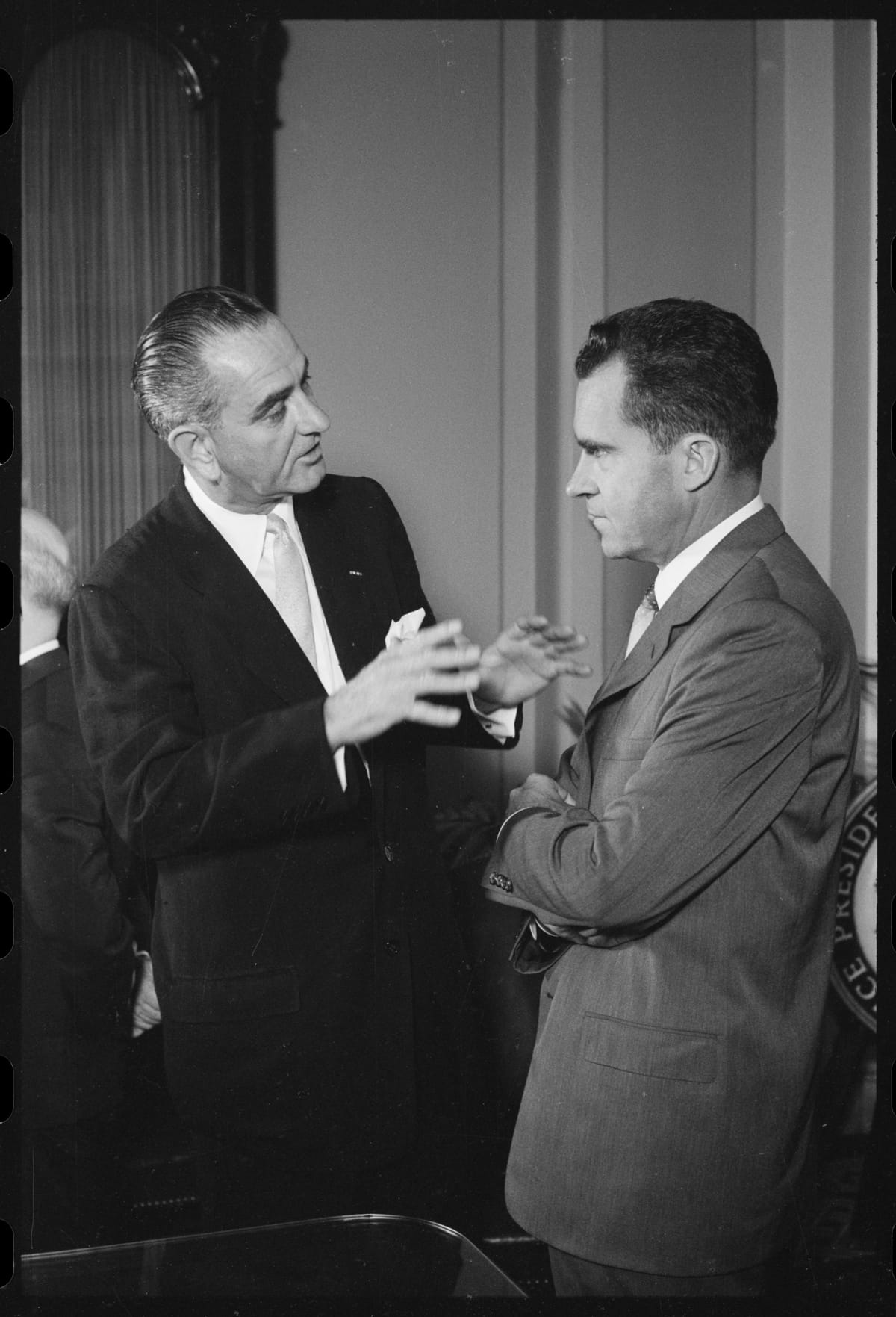The Key Thing the News Barely Covers

And now for a few fun policy questions. Can you...
- ...name one component of the 2021 Bipartisan Infrastructure Law?
- ...name one law that was enacted under Trump?
- ...ditto Obama (besides Obamacare)?
If you could answer any of those, brava!
If you were stumped by all of them (but can still remember Michelle Obama's totally killer lime green coat from the 2008 Inauguration Day parade), you're in good company.
When it comes to covering Congress and politicians, most of what's written and talked about is politics. Not policy. So let's drop anchor here and define our terms.
I think of policy as a plan or a course of action. For our purposes, that's a bill and the provisions it contains – like the Bipartisan Infrastructure Law, which includes a $65 billion provision to get just about every American internet access, which some 30 million are currently without. (There are many other provisions that you can read all about right here!)
Politics, on the other hand is the power to get policy across the finish line. And building that power often comes down to getting votes. Like then-Speaker Nancy Pelosi delaying votes on the Infrastructure bill because of progressives' demands. The Speaker knew she didn't have the power to get the bill passed yet (she did eventually) and progressives wielded the power of their votes to extract concessions.
Folks on both sides of the aisle say that key to Nancy Pelosi's effectiveness as Speaker of the House was that she's a great counter, meaning she can count votes. She knew the power a bill had, or didn't have. She also knew how to build that power by twisting arms, sweetening the pot, or otherwise.
Politics makes for much juicier press coverage; a wise storyteller once told me it's not a story if it doesn't have conflict, and politics serves up a whole lot of that. But policy is what becomes the laws that we live under, which seems useful to know.
Policy is the Tax Cuts and Job Acts of 2017, popularly known as the Trump Tax Cuts, which cut $1.5 trillion in taxes for corporations and more affluent folks. And since I know you've been champing at the bit for a breakdown of how that law impacted our economy, the National Bureau of Economic Research has answered your prayers!
Policy is the Dodd-Frank Wall Street Reform and Consumer Protection Act of 2010, which President Obama signed into law, and created more oversight on Wall Street following the 2008 financial meltdown and established the Consumer Financial Protection Bureau.
Riddle me this: what can the CFPB do for you? If you've got a bone to pick with your credit card, mortgage, student loans, or other financial products or services, CFPB will submit a complaint on your behalf. You can also browse their answers to questions like how will shopping for a car loan affect my credit or can anyone take out a reverse mortgage. That's policy in action!
And now, we'll get to the question that must be just burning a hole in your mind:
When we say, "Biden passed the infrastructure bill" or "Trump passed the tax cuts," isn't that a little misleading?
YES! IT! IS!
We have three co-equal branches of government:
- The Legislative Branch (Congress) which makes laws.
- The Executive Branch (the President and his cabinet) which carry out the laws.
- The Judicial Branch (the Supreme Court) which evaluates the laws.
Congress passed the Bipartisan Infrastructure bill, tax cuts, Dodd-Frank bill. The President signed them into law.
The White House absolutely gets involved in bill passage, weighs in on amendments, makes calls to key holdouts, whips votes, or steps out of the way if they aren't the right messenger.
But bills are passed (or not) by the Legislative Branch and signed into law (or not) by the Big Boss of the Executive Branch.
Now, a few fun facts to wow your friends and impress your neighbors! The President can veto a bill he's not a fan of. And Congress can override that veto with a two-thirds vote in the House and Senate if they're not a fan of the veto. But getting two-thirds of Congress to do anything but disagree is a high hill to climb.
To date, President Biden has vetoed 10 bills, none of which Congress overrode. President Trump vetoed 10 bills; Congress overrode one of those (the annual National Defense Authorization Action). President Obama vetoed 12 bills; Congress overrode one of those (the Justice Against Sponsors of Terrorism Act).
The most vetoing vetoer of all? Franklin D. Roosevelt with a ginormous 635.
For those who love a deep sea dive into our government's workings: The President signals support or opposition to a bill with a SAP (Statement of Administration Policy). You can read all of President Biden's SAPs here. But opposition doesn't necessarily mean a veto. A veto threat is typically spelled out - even underlined! - in the SAP, like this one.
Both policy and politics influence our lives. But the former matters more in the long run. Few outside of D.C. will remember the politicking to get the Inflation Reduction Act passed. But millions will be impacted by the lower prescription drug costs in that bill.
So when taking in all the shenanigans in Congress, the statehouse, or town hall, why not try to pierce through all the clammer and bluster of politics to the actual underlying policy (it's usually a few paragraphs down in the news coverage). And then decide if it's a policy we want to live under or not.
